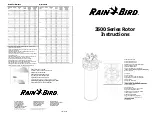
– 1 –
T
ABLE OF
C
ONTENTS
0
1.0
Introduction . . . . . . . . . . . . . . . . . . . . . . . . . . . . . . . . . . . . . . . . . . . . . . . . .
0
2
1.1 Accessories
0
2.0
Overview . . . . . . . . . . . . . . . . . . . . . . . . . . . . . . . . . . . . . . . . . . . . . . . . . . .
0
3
2.1 Gauge
2.2 Complete Kit
0
3.0
Operation . . . . . . . . . . . . . . . . . . . . . . . . . . . . . . . . . . . . . . . . . . . . . . . . . . .
0
4
3.1 Keypad
3.2 Display
3.3 Transducer
0
4.0
Condition & Preparation Of Surfaces . . . . . . . . . . . . . . . . . . . . . . . . . . . . .
0
7
0
5.0
Zeroing The Probe . . . . . . . . . . . . . . . . . . . . . . . . . . . . . . . . . . . . . . . . . . . .
0
8
0
6.0
Selecting Material Type (Calibration . . . . . . . . . . . . . . . . . . . . . . . . . . . . . .
0
9
0
7.0
Downloading Custom Calibrations . . . . . . . . . . . . . . . . . . . . . . . . . . . . . . .
10
0
8.0
Transducer Selection . . . . . . . . . . . . . . . . . . . . . . . . . . . . . . . . . . . . . . . . . .
11
0
9.0
Making Measurements . . . . . . . . . . . . . . . . . . . . . . . . . . . . . . . . . . . . . . . . .
13
10.0
Specifications . . . . . . . . . . . . . . . . . . . . . . . . . . . . . . . . . . . . . . . . . . . . . . . .
14
11.0
Appendix A: Application Notes . . . . . . . . . . . . . . . . . . . . . . . . . . . . . . . . . .
15
12.0
Appendix B: Sound Velocities Of Common Materials . . . . . . . . . . . . . . . .
17
13.0
Appendix C: User-Selected Material Types. . . . . . . . . . . . . . . . . . . . . . . . .
18
14.0
Warranty . . . . . . . . . . . . . . . . . . . . . . . . . . . . . . . . . . . . . . . . . . . . . . . . . . . .
19
IMPORTANT NOTE:
Inherent in ultrasonic thickness measurement is the possibility that the instrument will
use the second rather than the first echo from the back surface of the material being
measured. This may result in a thickness reading that is TWICE what it should be.
Responsibility for proper use of the instrument and recognition of this phenomenon rests
solely with the user of the instrument.
– 20 –
N
OTES





























